2014 ChaLearn Looking at People Workshop ECCV
Program Committee

Sergio Escalera
Computer Vision Center (UAB) and University of Barcelona, Spain
sergio.escalera.guerrero@gmail.com
Sergio Escalera is Full Professor at the Department of Mathematics and Informatics, Universitat de Barcelona, where he is the head of the Informatics degree. He is ICREA Academia. He leads the Human Pose Recovery and Behavior Analysis Group. He is Distinguished Professor at Aalborg University. He is vice-president of ChaLearn Challenges in Machine Learning, leading ChaLearn Looking at People events. He is also Fellow of the ELLIS European Laboratory for Learning and Intelligent Systems working within the Human-centric Machine Learning program. He participated in several international funded projects and received an Amazon Research Award. He has published more than 300 research papers and received a CVPR best paper award nominee and a CVPR outstanding reviewer award.

Hugo Jair Escalante
INAOE, México
hugojair@inaoep.mx
Hugo Jair Escalante is researcher scientist at Instituto Nacional de Astrofisica, Optica y Electronica, INAOE, Mexico. Previously, he was assistant professor at the Graduate Program on Systems Engineering at UANL. He holds a PhD in Computer Science, for which he received the best PhD thesis on Artificial Intelligence 2010 award (Mexican Society in Artificial Intelligence). He was granted the best paper award of the International Joint Conference on Neural Networks 2010 (IJCNN2010). He is secretary and member of the board of directors of ChaLearn, The Challenges in Machine Learning Organization, a non-profit organism dedicated to organizing challenges, since 2011. Also, he is member of the board of the CONACYT Network on Applied Computational Intelligence, regular member of AMEXCOMP and member of the National System of Researchers (SNI). Since 2017, he is editor of the Springer Series on Challenges in Machine Learning, a new book series focused on academic competitions within machine learning and related fields. He has been involved in the organization of several challenges in computer vision and machine learning, collocated with top venues in machine learning and computer vision, see http://chalearnlap.cvc.uab.es/. He has served as co-editor of special issues in IJCV, IEEE TPAMI, and IEEE Transactions on Affective Computing. He has served as area chair for NIPS 2016 and NIPS 2017, and has been member of the program committee of venues like CVPR, ICPR, ICCV, ECCV, ICML, NIPS, IJCNN. His research interests are on machine learning, evolutionary computing and its applications on language and vision.

Xavier Baró
Universitat Oberta de Catalunya, Barcelona, Catalonia
xbaro@uoc.edu
Xavier Baró received his B.S. degree in Computer Science at the Universitat Autònoma de Barcelona (UAB) in 2003. In 2005 he obtained his M.S. degree in Computer Science at UAB, and in 2009 the Ph.D degree in Computer Engineering. At the present he is a lecturer and researcher at the IT, Multimedia and Telecommunications department at Universitat Oberta de Catalunya (UOC). He is involved on the teaching activities of the Computer Science, Telecommunication and Multimedia degrees of the UOC, and collaborates as assistant professor on the teaching activities of the Computer Science degree at the Applied Mathematics and Analysis of the Universitat de Barcelona (UB). In addition, he is involved on the Interuniversity master on Artificial Intelligence (UPCUBURV). He is cofounder of the Scene Understanding and Artificial Intelligence (SUNAI) group of the UOC, and collaborates with the Computer Vision Center of the UAB, as member of the Human Pose Recovery and Behavior Analysis (HUPBA) group. His research interests are related to machine learning, evolutionary computation, and statistical pattern recognition, specially their applications to generic object recognition over huge cardinality image databases.

Jordi Gonzàlez
Computer Vision Center and Universitat Autònoma de Barcelona, Barcelona, Spain
jordi.gonzalez@uab.cat
Dr. Jordi Gonzàlez received the Ph.D. degree in Computer Engineering in 2004 from Universitat Autònoma de Barcelona (UAB), Catalonia. He was a postdoctoral fellow at the Institut de Robòtica i Informàtica Industrial (IRI), a Joint Research Center of the Technical University of Catalonia (UPC) and the Spanish Council for Scientific Research (CSIC). At present, he is Associate Professor in Computer Science at the Computer Science Department, UAB. He is also a research fellow at the Computer Vision Center, where he has co-founded 2 spin-offs and the Image Sequence Evaluation (ISE Lab) research group in 2004. His research interests lie on pattern recognition and machine learning techniques for the computational interpretation of human behaviours in image sequences, or Video Hermeneutics. He has co-organized the THEMIS (BMVC2008 and ICCV2009), ARTEMIS (ACM MM2010, ECCV2012 and ACM MM2013) and ChaLearn LAP (ICMI2013, ECCV2014 and CVPR2015) workshops related to the video-based analys is of human motion in surveillance, films and social media footage. He has served as Area Chair (ICPR2012 and ICIAP2015); Publicity Chair at AVSS2012; Workshop Chair (ICCV2011 and AVSS2015); Local Arrangement Chair at ICCV2011; and Tutorial Chair at ibPRIA2011. He has co-organized Special Issues in IJPRAI (2009), CVIU (2012), MVA (2013) and TPAMI (2015) journals. He is member of the Editorial Board of CVIU and IET-CVI journals. He is also member of IEEE, Spanish Association on Pattern Recognition (AERFAI) and Catalan Association for Artificial Intelligence (ACIA).

Isabelle Guyon
University Paris-Saclay, France and ChaLearn USA
isabelle@clopinet.com
Isabelle Guyon ( http://guyon.chalearn.org/ ) is chaired professor in “big data” at the Université ParisSaclay, specialized in statistical data analysis, pattern recognition and machine learning. She is one of the cofounders of the ChaLearn Looking at People (LAP) challenge series and she pioneered applications of the MIcrosoft Kinect to gesture recognition. Her areas of expertise include computer vision and and bioinformatics. Prior to joining ParisSaclay she worked as an independent consultant and was a researcher at AT&T Bell Laboratories, where she pioneered applications of neural networks to pen computer interfaces (with collaborators including Yann LeCun and Yoshua Bengio) and coinvented with Bernhard Boser and Vladimir Vapnik Support Vector Machines (SVM), which became a textbook machine learning method. She worked on early applications of Convolutional Neural Networks (CNN) to handwriting recognition in the 1990’s. She is also the primary inventor of SVMRFE, a variable selection technique based on SVM. The SVMRFE paper has thousands of citations and is often used as a reference method against which new feature selection methods are benchmarked. She also authored a seminal paper on feature selection that received thousands of citations. She organized many challenges in Machine Learning since 2003 supported by the EU network Pascal2, NSF, and DARPA, with prizes sponsored by Microsoft, Google, Facebook, Amazon, Disney Research, and Texas Instrument. Isabelle Guyon holds a Ph.D. degree in Physical Sciences of the University Pierre and Marie Curie, Paris, France. She is president of Chalearn, a nonprofit dedicated to organizing challenges, vicepresident of the Unipen foundation, adjunct professor at NewYork University, action editor of the Journal of Machine Learning Research, editor of the Challenges in Machine Learning book series of Microtome, and program chair of the upcoming NIPS 2016 conference.

Miguel Reyes Estany
Computer Vision Center (UAB) and University of Barcelona, Barcelona, Spain
mreyes@physicaltech.com
Miguel Reyes received his Bachelor degree in Computer Science at Universitat Autònoma de Barcelona (UAB) in 2010, and his master degree in Artificial Intelligence in Universitat Politècnica de Catalunya (UPC) in 2011. In October 2011 he joined to the University of Barcelona (UB), where he is assistant professor in the Computer Science area and in the master of artificial intelligence in the field of computer vision. He is currently Math PhD student, within applied mathematics and analysis department (MAIA). His research interests are focused in pattern recognition, visual object recognition, multi-modal computer vision for pose recovery, probabilistic and dynamic programming approaches for behavior analysis, and interested in clinical applications transferring. Currently linked to the Barcelona Perceptual Learning, associated to Consolider Ingenio, MIPRCV: Multimodal Interaction in Pattern Recognition and Computer Vision PR-CVC 2012, and Computer Vision Center (UAB) member in HUPBA group.

Jamie Shotton
Microsoft Research Cambridge, United Kingdom
jamiesho@microsoft.com
Jamie Shotton leads the Machine Intelligence & Perception group at Microsoft Research Cambridge. He studied Computer Science at the University of Cambridge, where he remained for his PhD in computer vision and machine learning for visual object recognition. He joined Microsoft Research in 2008 where he is now a Principal Researcher. His research focuses at the intersection of computer vision, AI, machine learning, and graphics, with particular emphasis on systems that allow people to interact naturally with computers. He has received multiple Best Paper and Best Demo awards at top academic conferences. His work on machine learning for body part recognition for Kinect was awarded the Royal Academy of Engineering’s gold medal MacRobert Award 2011, and he shares Microsoft’s Outstanding Technical Achievement Award for 2012 with the Kinect engineering team. In 2014 he received the PAMI Young Researcher Award, and in 2015 the MIT Technology Review Innovator Under 35 Award (“TR35”).

Meysam Madadi
Universitat de Barcelona and Computer Vision Center, Spain
meysam.madadi@gmail.com
Meysam Madadi received his Bachelor degree in Software Engineering at BuAli Sina university of Hamedan and M.S. degree in Computer Vision and Artificial Intelligence at Universitat Autònoma de Barcelona (UAB) in 2007 and 2013, respectively. He has started his research activities by focusing on information retrieval and data mining since his bachelor project, continuing in master specifically on computer vision and image processing. He gave a special attention to pose recovery and human behavior analysis from his master thesis in title of Extraction of body soft-biometry from 3D videos using Kinect. He is interested in generating and developing new algorithms in these topics applying the knowledge in computer vision and retrieval systems besides machine learning, algorithms design in artificial intelligence, statistics, and linear algebra, among others.
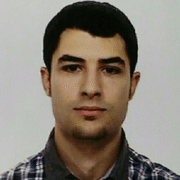
Víctor Ponce
Universitat de Barcelona and Computer Vision Center, Spain
vponcelop@gmail.com
Víctor Ponce Received his B.S. degree in Computer Science in 2010, and his M.S. degree in Artificial Intelligence in 2012. I’m a Ph.D. candidate at the the Dept. of Mathematics and Computer Science, University of Barcelona. I’m member of the Computer Vision Center, in the group Human Pose Recovery and Behavior Analysis (HuPBA). His main interests of research are the fields of computer vision, machine learning, and evolutionary computation applied to human behavior analysis.

Miguel Ángel Bautista
University of Barcelona and Computer Vision Center, Spain
mbautista@ub.edu
I was born in the beautiful island of Ibiza, Spain. I earned my Ph. D in Error-Correcting Representations for Multi-class problems at University of Barcelona. My main research interest lay in the intersection of Computer Vision and Machine Learning, I am particularly interested in high-level problems (object recognition, pose estimation, action recognition, etc.). I received my B. Sc. and M. Sc. degrees in Computer Science and Artificial Intelligence from Universitat de Barcelona and Universitat Politécnica de Catalunya in January and June 2010, respectively. In 2010 I received the first prize from the Catalan Association of Artificial Intelligence Thesis Awards. In 2013 I was a visitor at Carnegie Mellon University (advised by Dr. Fernando de la Torre), funded by the AGAUR-BE grant. Currently, I am a Postdoctoral Fellow with the Heidelberg Collaboratory for Image Processing working on deep unsupervised methods for similaritiy learning.
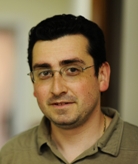
Leonid Sigal
Disney Research Pittsburgh
lsigal@disneyresearch.com
Leonid Sigal was born in Kiev, Ukraine. He is a Senior Research Scientist at Disney Research Pittsburgh, in conjunction with Carnegie Mellon University. Prior to this he was a postdoctoral fellow in the Department of Computer Science at University of Toronto. He completed his Ph.D. under the supervision of Prof. Michael J. Black at Brown University; he received his B.Sc. degrees in Computer Science and Mathematics from Boston University (1999), his M.A. from Boston University (1999), and his M.S. from Brown University (2003). From 1999 to 2001, he worked as a senior vision engineer at Cognex Corporation, where he developed industrial vision applications for pattern analysis and verification. His work received the Best Paper Award at the Articulate Motion and Deformable Objects Conference in 2006 (with Prof. Michael J. Black).
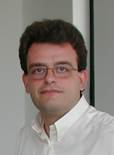
Antonis Argyros
University of Crete, Crete, Greece
argyros@ics.forth.gr
Antonis A. Argyros (Αντώνης Αργυρός) is a Professor of Computer Science at the Computer Science Department (CSD), University of Crete (UoC) and a researcher at the Institute of Computer Science (ICS), Foundation for Research and Technology-Hellas (FORTH) in Heraklion, Crete, Greece. He received a B.Sc. degree in Computer Science (1989) and a M.Sc. degree in Computer Science (1992), both from the Computer Science Department, University of Crete. On July 1996, he completed his PhD on visual motion analysis at the same Department. He has been a postdoctoral fellow at the Computational Vision and Active Perception Laboratory (CVAP) at the Royal Institute of Technology in Stockholm, Sweden. Since 1999, as a member of the Computational Vision and Robotics Laboratory (CVRL) of FORTH-ICS, he has been involved in many RTD projects in computer vision, image analysis and robotics.His current research interests fall in the areas of computer vision and pattern recognition, with emphasis on the analysis of humans in images and videos, human pose analysis, recognition of human activities and gestures, 3D computer vision, as well as image motion and tracking. He is also interested in applications of computer vision in the fields of robotics and smart environments. In these areas, he has published more than 160 papers in scientific journals and refereed conference proceedings and has also delivered several invited and keynote talks in international events, universities and research centers.

Richard Bowden
University of Surrey, Guildford, United Kingdom
r.bowden@surrey.ac.uk
Richard Bowden received a BSc in computer science from the University of London in ’93, an MSc with distinction from the University of Leeds in ’95, and a PhD in computer vision from Brunel University in ’99 for which he was awarded the Sullivan Doctoral Thesis Prize. He is Professor of Computer Vision and Machine Learning at the University of Surrey, UK, where he leads the Cognitive Vision Group within the Centre for Vision Speech and Signal Processing and was recently awarded a Royal Society Leverhulme Trust Senior Research Fellowship. His research centres on the use of computer vision to locate, track, and understand humans. He is an Associate Editor for Image and Vision Computing and IEEE Pattern Analysis and Machine Intelligence. He was a member of the British Machine Vision Association (BMVA) executive committee and a company director for seven years. He is a member of the BMVA, a fellow of the Higher Education Academy, and a senior member of the IEEE.

Adrian Hilton
University of Surrey, Guildford, United Kingdom
a.hilton@surrey.ac.uk
In January 2012 I became Director of the Centre for Vision, Speech and Signal Processing (CVSSP) at the University of Surrey. CVSSP is one of the largest UK research groups in computer vision, pattern recognition, signal processing and multimedia communication with over 100 researchers and a grant portfolio in excess of £9M. The centre was founded in 1986 by Prof.Josef Kittler establishing internationally recognised expertise in pattern recognition and computer vision. A characteristic of the centre’s research has always been the combination of generic theoretical advances with practical application to specific problem domains in collaboration with industry. Today the centre offers a vibrant research environment with interests spanning spatial audio to 4D space-time signal processing for entertainment and medical applications. I also lead Visual Media Research (V-Lab) in CVSSP which is conducting research in video analysis, computer vision and graphics for next generation communication and entertainment applications. From 2008-12 I was supported by a Royal Society Industry Fellowship to conduct research with leading visual-effects company Framestore investigating 4D technologies for Digital Doubles in film production. The goal of my research is to bridge-the-gap between real and computer generated imagery. My research combines the fields of computer vision, graphics and animation to investigate new methods for reconstruction, modelling and understanding of the real world from images and video. Applications include: sports analysis (soccer, rugby, athletics), 3D TV and film production, visual effects, character animation for games, digital doubles for film and facial animation for visual communication. Current research is focused on video-based measurement in sports, multiple camera systems in film and TV production, and 3D video for highly realistic animation of people and faces. Research is conducted in collaboration with UK companies in the creative industries.

Carol Neidle
Boston University, Boston, United States of America
carol@bu.edu
Professor Neidle teaches courses in general linguistics and French linguistics. Her research interests include syntactic theory and the syntactic structure of American Sign Language (ASL). Professor Neidle is the Director of the American Sign Language Linguistic Research Project (ASLLRP). Funding from the NSF supports linguistic research on the syntactic structure of ASL, development of computational tools (including SignStream, a MacOS application) to facilitate analysis of signed language and gesture, and collaborative research with computer scientists interested in the problem of sign language recognition. Through our National Center for Sign Language and Gesture Resources, several different types of experimental resources and analyzed data are made publicly available. Her publications include The Syntax of American Sign Language: Functional Categories and Hierarchical Structure (MIT Press) and The Role of Case in Russian Syntax (Dordrecht: Kluwer).
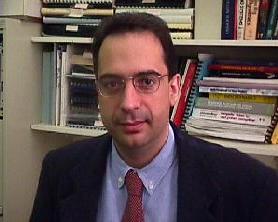
Dimitris Metaxas
Rutgers, City of New Brunswick, United States of America
dnm@cs.rutgers.edu
Dr. Dimitris Metaxas is a Distinguished Professor in the Department of Computer Science at Rutgers University since July 2007. From September 2001 to June 2007 he was a Professor in the same department. He is currently directing the Center for Computational Biomedicine, Imaging and Modeling (CBIM). From January 1998 to September 2001 he was a tenured Associate Professor in the Computer and Information Science Department of the University of Pennsylvania and Director of the VAST Lab. Prior to this he was an Assistant Professor in the same department since 1992. Prof. Metaxas received a Diploma in Electrical Engineering from the National Technical University of Athens of Athens Greece in 1986, an M.Sc. in Computer Science from the University of Maryland, College Park in 1988, and a Ph.D. in Computer Science from the University of Toronto, Ontario, Canada in 1992. Dr. Metaxas has been conducting research towards the development of formal methods upon which both computer vision, computer graphics and medical imaging can advance synergistically. In computer vision, he works on the simultaneous segmentation and fitting of complex objects, shape representation, statistical model-based tracking, learning, sparsity, ASL and gesture recognition. In particular he is focusing on human body and shape motion analysis, human surveillance, security applications, ASL recognition, behavior modeling and analysis and scalable solutions to large and distributed sensor-based networks.

Fernando De la Torre
Carnegie Mellon University, Pittsburgh, United States of America
ftorre@cs.cmu.edu
Fernando De la Torre received his B.Sc. degree in Telecommunications, as well as his M.Sc. and Ph. D degrees in Electronic Engineering from La Salle School of Engineering at Ramon Llull University, Barcelona, Spain in 1994, 1996, and 2002, respectively. In 1997 and 2000, he became Assistant and Associate Professor in the Department of Communications and Signal Theory in Enginyeria La Salle. In 2003 he joined the Robotics Institute at Carnegie Mellon University and currently he is Research Associate Professor. His research interests are in the fields of Computer Vision and Machine Learning. Currently, he is directing the Human Sensing Laboratory.
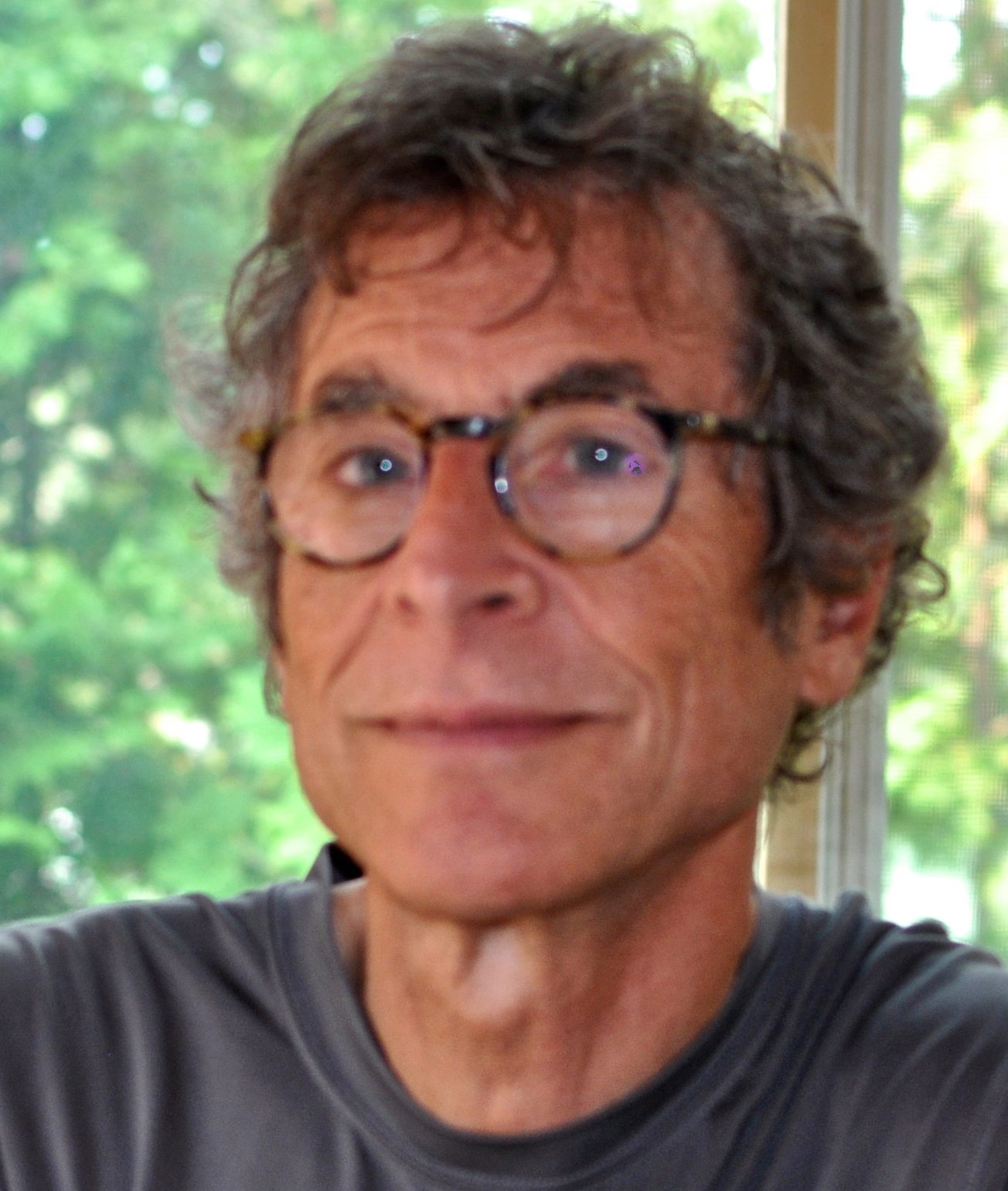
Jeffrey Cohn
University of Pittsburgh, Pittsburgh, United States of America
jeffcohn@pitt.edu
Jeffrey Cohn is Professor of Psychology and Psychiatry at the University of Pittsburgh and Adjunct Professor of Computer Science at the Robotics Institute at Carnegie Mellon University. He leads interdisciplinary and inter-institutional efforts to develop advanced methods of automatic analysis and synthesis of facial expression and prosody; and applies those tools to research in human emotion, social development, non-verbal communication, psychopathology, and biomedicine. His research has been supported by grants from the U.S. National Institutes of Health, National Science Foundation, Autism Foundation, Office of Naval Research, and Defense Advanced Research Projects Agency among other sponsors. He has co-chaired the IEEE International Conference on Automatic Face and Gesture Recognition (FG 2017, FG2015, and FG2008), the International Conference on Affective Computing and Intelligent Interaction (ACII 2009), and the International Conference on Multimodal Interfaces (ACM 2014). He is a co-editor of IEEE Transactions in Affective Computing (TAC) and has co-edited special issues on affective computing for the Journal of Image and Vision Computing, Pattern Recognition Letters, Computer Vision and Image Understanding, and ACM Transactions on Interactive Intelligent Systems.

Thomas B. Moeslund
Aalborg University, Aalborg, Denmark
tbm@create.aau.dk

Stan Sclaroff
Boston University, Boston, United States of America
sclaroff@bu.edu
Stan Sclaroff joined the BU Department of Computer Science in 1995 after completing his PhD at MIT. He founded the Image and Video Computing research group at Boston University in 1995. He served as the Chair of the Department from 2007-2013. Stan’s research interests are in computer vision, pattern recognition, and machine learning. Stan is an expert in the areas of tracking, video-based analysis of human motion and gesture, deformable shape matching and recognition, as well as image/video database indexing, retrieval, and data mining methods. He developed one of the first content-based image retrieval systems for the Internet, the ImageRover, years before Google Image Search appeared. His more recent work has focused on human tracking algorithms, analysis and identification of hand motion related to sign language, and filtering methods for multimedia retrieval.

Maja Pantic
Imperial College, London, United Kingdom
m.pantic@imperial.ac.uk
Maja Pantic is a Professor of Affective and Behavioral Computing in the Imperial College and leader of the i·BUG group, working on machine analysis of human non-verbal behaviour and its applications to humancomputer, human-robot, and computer-mediated human-human interaction. Prof. Pantic published more than 200 technical papers in the areas of machine analysis of facial expressions, machine analysis of human body gestures, audiovisual analysis of emotions and social signals, and humancentered machine interfaces. She has more than 12,000 citations to her work, and has served as the Key Note Speaker, Chair and Co-Chair, and an organization/ program committee member at numerous conferences in her areas of expertise.

Paolo Remagnino
Kingston University, United Kingdom
p.remagnino@kingston.ac.uk
Prof. Remagnino is the leader of the Robot Vision Team, a multidisciplinary group of researchers and academic concerned with the development of intelligent algorithms for the automatic interpretation of images and videos. In the last five years Prof. Remagnino has carried research in computer vision, machine learning, pattern recognition and distributed intelligence funded by national (Leverhulme Trust, EPSRC) and international (EU FP7, AAL, US DHS, US EOARD/AFSOR) funding bodies. Prof. Remagnino has served as associate editor for a number of IEEE Transactions, Elsevier International Journals and he is now associated editor for Neurocomputing and the IEEE Transactions on Human-Machine Systems. Prof. Remagnino is a member of the EPSRC college, senior IEEE member, and honorary research associate of the Royal Botanic Gardens, Kew. He has published over 150 scientific papers and articles in international conferences and high impact journals. Prof. Remagnino is currently working on three strands of research: image and video understanding, machine learning, computational botany and distributed intelligence. His interests and current research are multi-disciplinary in nature and lend themselves well to application domains such as intelligent monitoring, search and rescue robotics, ambient assisted living and classification in botany. Prof. Remagnino is a member of the Faculty Ethics committee at Kingston University.

Ali Salah
Boğaziçi University, Turkey
salah@boun.edu.tr
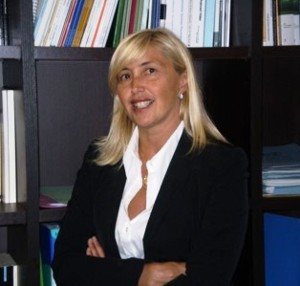
Rita Cucchiara
University of Modena and Reggio Emilia, Italy
cucchiara.rita@unimore.it
Prof. Rita Cucchiara was born in Modena on the 13th of March 1965. She is married and has two children, Federico and Vittoria. She received her Ph.D. in Computer Engineering at University of Bologna in October 1992, was Assistant Professor at the Faculty of Engineering, University of Ferrara (1993-1998) and then Associate Professor in Computer Engineering at the Faculty of Engineering, University of Modena. Since January 2005 she is Full Professor in Computer Engineering at the Faculty of Engineering, University of Modena and Reggio Emilia. Rita Cucchiara is currently vice-dean of the Faculty of Engineering of Modena. She is coordinator of the Phd Curricula in Computer engineering and Science of the Phd School of ICT of Modena. She is Director of the Centre Softech (software technology for enterprise) and coordinates the ImageLab of Modena. Her current interests include pattern recognition and computer vision for video surveillance, medical imaging, machine vision and multimedia. Video surveillance activity is devoted to algorithms and systems for of object segmentation, shadow detection, tracking, and people behavior analysis in indoor and outdoor applications. Eventually, these models are applied in intelligent transportation systems and in forensics. In multimedia she work in annotation and content based retrieval in image and video database for broadcast and cultural heritage applications of document analysis. Research in machine vision covers the area of quality inspection and robot picking with 3D vision. Medical imaging research is oriented towards colour analysis for skin lesion and melanoma classification. Rita Cucchiara is responsible for many Italian and International projects. Currently, she is coordinator of the This European Project, and collaborates in the EU Project, Vidivideo for video surveillance, with the platform VISOR; she is responsible of a Nato project Besafe in the Science for Peace program; she is national responsible of the PRIN project Freesurf. Finally she coordinates several projects with companies, funded by private and public grants. Rita Cucchiara is author of more than 150 papers in national and international journals, and conference proceedings. She currently serves as reviewer for many international journals (e.g. IEEE Trans. on PAMI, IEEE Trans. on Circuit and Systems, Trans. on SMC, Trans. on Vehicular Technology, Trans. on Medical Imaging, Image and Vision Computing,..). She participated at scientific committees of international conferences (CVPR, ICME, ICPR, ...) and symposia and organized special tracks in image processing and multimedia. She is member of GIRPR (Italy- associated with IAPR), AixIA (Ital. Assoc. Of Artificial Intelligence), ACM and IEEE Computer Society. In 2000 she organized the bi-annual School on Machine Vision of IAPR-IC. In 2005 she co-organized the 3rd Workshop of VSSN05 jointed with ACM Multimedia Conference and is currently editor of a special issue on Multimedia System Journal of ACM. In 2006 she is co-chair of the European School of Multimedia Digital Library. In 2007 she was general chair of the 14th International Conference of Image Analysis and Processing, sponsored by IAPRand in 2009 general chair of the Italian Conference in Artificial intelligence and of the ACM Workshop in Multimedia in Forensics.
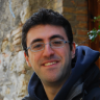
Giuseppe Serra
University of Modena and Reggio Emilia, Italy
giuseppe.serra@unimore.it
Giuseppe Serra is an assistant professor at the University of Modena and Reggio Emilia (Italy). He graduated in Computer Engineering with honors from the University of Florence in 2006. He was awarded the title of Doctor of Philosophy in Computer Engineering, Multimedia and Telecommunications in 2010 from The MICC Center. He was a visiting scholar at Carnegie Mellon University, Pittsburgh, PA, and at Telecom ParisTech/ENST, Paris, in 2006 and 2010 respectively. His research interests include egocentric vision, image and video analysis, multimedia ontologies and multiple view geometry. He has published more than 40 publications in scientific journals and international conferences. He has been awarded the best paper award by the ACM&SIGMM Workshop on Social Media in 2010. He is a co-organizer of the “International Workshop on Multimedia for Cultural Heritage” in 2013. He also serves as a Guest Editor of the Special Issue on “Multimedia for Cultural Heritage” in the Multimedia Tools and Applications Journal. He was a Technical Program Committee member of several workshops and conferences. He regularly serves as reviewer for international journals and conference, including ACM Transactions on Multimedia Computing, Communications, and Applications, IEEE Transactions on Multimedia, IEEE Transactions on Information Forensics and Security, and Pattern Recognition.

Xavier Varona Gómez
Universitat de les Illes Balears, Spain
PhD in Computer Science since 2001 by the Universitat Autònoma de Barcelona. Predoctoral and postdoctoral researcher in the Computer Vision Centre at the Universitat Autònoma de Barcelona. Computer Vision expert. Researcher of the 'Ramón y Cajal' program at the Universitat de les Illes Balears from 2005 to 2009. Researcher of the I3 program for the Intensification of Research from 2009 to the present. Associate Professor since December 2009 in the Dept. of Mathematics and Computer Sciecne at the Universitat de les Illes Balears. He has taught in the studies of Computer Science & Engineering at UAB (1995-2003) and the UIB (2004-present). He has also taught at the Bachelor on Computer Science & Engineering at the UIB. In Grade, he has taught in three different titles of Master and PhD courses, and he has supervised five doctoral theses (1 UAB and 4 at the UIB). He has participated in over 10 research funded projects at regional, national and international levels (in 4 of them as principal investigator). He has participated during this period in many technology transfer projects with companies and has been Co-founder of Inisle Interactive Technologies, a spin-off of the UIB in 2012. He was Director of the Master in Information Technologies and Co-Director of the PhD program in Computer Science. Deputy director of the Mathematics and Computer Science. Deputy director of the Center for Postgraduate Studies of the UIB. Deputy Rector and currently Vice Chancellor of Titles and Technology.

Hedvig Kjellström
KTH Royal Institute of Technology, Sweden
hedvig@csc.kth.se
Hedvig Kjellström is a Professor of Computer Science and the head of the Computer Vision and Active Perception Lab (CVAP) at KTH in Stockholm, Sweden. She received an MSc in Engineering Physics and a PhD in Computer Science from KTH in 1997 and 2001, respectively. The topic of her doctoral thesis was 3D reconstruction of human motion in video. Between 2002 and 2006 she worked as a scientist at the Swedish Defence Research Agency, where she focused on Information Fusion and Sensor Fusion. In 2007 she returned to KTH, pursuing research in activity analysis in video. Her present research focuses on the modeling of perception and production of human non-verbal communicative behavior and activity, with applications in Health, Robotics, and Performing Arts. In 2010, she was awarded the Koenderink Prize for fundamental contributions in Computer Vision for her ECCV 2000 article on human motion reconstruction, written together with Michael Black and David Fleet. She has written around 70 papers in the fields of Robotics, Computer Vision, Information Fusion, Machine Learning, Cognitive Science, Speech, and Human-Computer Interaction. She is mostly active within the areas of Robotics and Computer Vision, where she is an Associate Editor for IEEE TPAMI and IEEE RA-L, and an Area Chair for CVPR 2016 and RSS 2016.

Anastasios Doulamis
Technical University of Crete, Greece
Anastasios D. Doulamis (S’96, M’00) received the Diploma and PhD degree in Electrical and Computer Engineering from the National Technical University of Athens (NTUA) with the highest honor. Until January 2014, he was an associate professor at the Technical University of Crete and now is a faculty member of NTUA. Prof. A. Doulamis has received several awards in his studies, including the Best Greek Student Engineer, Best Graduate Thesis Award, National Scholarship Foundation prize, etc. He has also served as program committee in several major conferences of IEEE and ACM. He is author of more than 200 papers in leading journals and conferences receiving more than 2000 citations.

Simon Ruffieux
University of Fribourg, Switzerland
simon.ruffieux@hefr.ch
Simon Ruffieux is currently a Researcher at the University of Applied Sciences of Western Switzerland, Fribourg (HES-SO FR). He is working on several projects (e-bikes usage optimization, astronomical telescope automation, medical related projects, etc). He holds a diploma of Doctor of Science in Informatics from the University of Fribourg and a Master in Computer Sciences from the Swiss Federal Institute Of Technology (EPFL), Switzerland. He holds a specialization in Bio-computing. His research domains are in the area of robotics, human machine interface, machine learning and gesture recognition. He also works as scientific collaborator in the Information and Communication Department, mainly giving lectures for bachelor and master courses and supervising students during their projects.
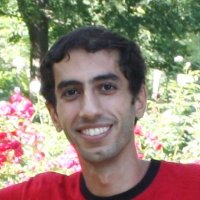
Mohammad Ali Bagheri
Dalhousie University, Canada

Steve Maybank
Birkbeck, University of London, United Kingdom
sjmaybank@dcs.bbk.ac.uk
Steve Maybank has a BA in Mathematics (Cambridge 1976) and a PhD in Computer Science (Birkbeck 1988). He was a GEC research scientist (1980-1995), Reading University lecturer (1995-2003) and from 2004, professor at Birkbeck. His research interests include computer vision, visual surveillance, statistics and information theory.
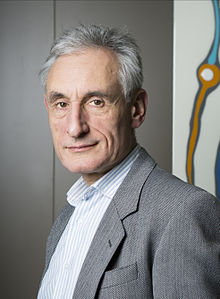
Andrew Blake
Microsoft Research, United Kingdom
Andrew Blake graduated in 1977 from Trinity College, Cambridge with a B.A. in Mathematics and Electrical Sciences. After a year as a Kennedy Scholar at MIT and two years in the defence electronics industry, he studied for a PhD at the University of Edinburgh which was awarded in 1983. Until 1987 he was on the faculty of the department of Computer Science at the University of Edinburgh, as a Royal Society Research Fellow. From 1987 to 1999, he was on the academic staff of the Department of Engineering Science in the University of Oxford, where he became a Professor in 1996, and was a Royal Society Senior Research Fellow for 1998-9. In 1999 he moved to Microsoft Research Cambridge as Senior Research Scientist, where he founded the Computer Vision Group. In 2008 he became a Deputy Managing Director at the lab, before becoming Laboratory Director in 2010.
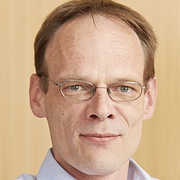
Michael Arens
Fraunhofer IOSB, Germany
michael.arens@iosb.fraunhofer.de
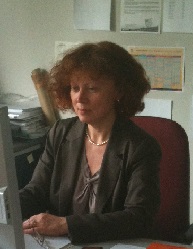
Jenny Benois-Pineau
Bordeaux University, France
jenny.benois-pineau@labri.fr
Jenny Benois-Pineau is a full professor of Computer science at the University Bordeaux and chair of Video Analysis and Indexing research group in Image and Sound Department of LABRI UMR 58000 Université Bordeaux/CNRS/IPB-ENSEIRB. She has been a deputy scientific director of theme B of French national research unity GDR CNRS ISIS (2008 - 2015), and is now a chair od international relations at College of Sciences and Technologies at University Bordeaux.

Filiberto Pla
Jaume I University, Spain
filiberto.pla@lsi.uji.es
Filiberto Pla is a Full Professor at the Department of "Lenguajes y Sistemas Informáticos" and Director of the Research Institute of New Imaging Technologies of the University Jaume I, Castellón, Spain. He has taught different subjects in undergraduate degrees, mainly in the Computer Engineering Degree, and master degrees such as the MSc Degree on Intelligent Systems and the Erasmus Mundus MSc Degree on GeoSpatial Technologies. He is the Coordinator of the Visual Engineering Group - eVis. He has led various research projects and published papers in different conferences and journals in Image Processing, Computer Vision and Pattern Recognition. His current research interests are colour and spectral image analysis, visual motion analysis, 3D imaging and pattern recognition and machine learning techniques applied to image processing.

Oriol Pujol
University of Barcelona, Spain
oriol.pujol@ub.edu
Oriol Pujol Vila obtained the degree in Telecomunications Engineering in 1998 from the Universitat Politècnica de Catalunya (UPC). The same year, he joined the Computer Vision Center and the Computer Science Department at Universitat Autònoma de Barcelona (UAB). In 2004 he received the Ph.D. in Computer Science at the UAB on work in deformable models, fusion of supervised and unsupervised learning and intravascular ultrasound image analysis. In 2005 he joined the Dept. of Matemàtica Aplicada i Anàlisi at Universitat de Barcelona (UB) where he became associate professor. He is member of the BCN Perceptual Computing Lab. He has been since 2004 an active member in the organization of several activities related to image analysis, computer vision, machine learning and artificial intelligence.

Marcin Grzegorzek
University of Koblenz and Landau, Germany
marcin.grzegorzek@uni-siegen.de
Marcin Grzegorzek is Professor for Pattern Recognition at the University of Siegen, Professor for Multimedia at the University of Economics in Katowice and Chairman of the Board of Data Understanding Lab Ltd. He studied Computer Science at the Silesian University of Technology, did his PhD at the Pattern Recognition Lab at the University of Erlangen-Nuremberg, worked scientifically as Postdoc in the Multimedia and Vision Research Group at the Queen Mary University of London and at the Institute for Web Science and Technologies at the University of Koblenz-Landau, did his habilitation at the AGH University of Science and Technology in Kraków. He published around 100 papers in pattern recognition, image processing, machine learning, and multimedia analysis and acted as examiner in 16 finalised doctoral procedures (reviewer in 7, supervisor in 2). For the time being, he runs seven externally funded research projects. For instance, Marcin is Consortium Coordinator in the German national AAL project Cognitive Village and Principal Investigator in the Horizon 2020 project My-AHA: My Active and Healthy Ageing.
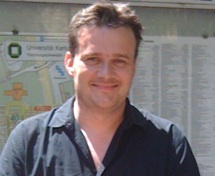
Chris Bregler
New York University, United States of America
chris@betablonde.com
Chris Bregler currently works at Google. He was on the faculty at New York University and Stanford University and has worked for several companies including Hewlett Packard, Interval, Disney Feature Animation, LucasFilm's ILM, Facebook's Oculus, and the New York Times. He received his M.S. and Ph.D. in Computer Science from U.C. Berkeley and his Diplom from Karlsruhe University. In 2016 he received an Academy Award in the Oscar's Science and Technology category. He has been named Stanford Joyce Faculty Fellow, Terman Fellow, and Sloan Research Fellow. He received the Olympus Prize for achievements in computer vision and pattern recognition and was awarded the IEEE Longuet-Higgins Prize for "Fundamental Contributions in Computer Vision that have withstood the test of time". His work has resulted in numerous awards from the National Science Foundation, Sloan Foundation, Packard Foundation, Electronic Arts, Microsoft, Google, U.S. Navy, U.S. Airforce, N.S.A, C.I.A. and other sources.He's been the executive producer of Squidball.net, which required building the world's largest real-time motion capture volume, and a massive multi-player motion game holding several world records in The Motion Capture Society. He has been active in the visual effects industry, for example, as the lead developer of ILM's Multitrack system that has been used in many feature film productions, including Avatar, Avengers, Noah, Star Trek, and Star Wars.
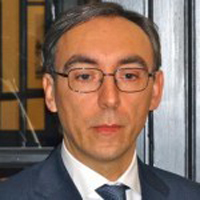
Gian Luca Foresti
University of Udine, Italy
gianluca.foresti@uniud.it
Gian Luca Foresti was born in Savona, Italy, in 1965. He received the Laurea degree cum laude in Electronic Engineering in 1990 and the Ph.D degree in Computer Science in 1994 from University of Genoa. In 1994 he was visiting Professor at Trento University in an Electronic Engineering course. Currently, he is Full Professor at the Department of Mathematics, Computer Science and Physics (DMIF) of the University of Udine. Immediately after the Laurea degree, he worked with the Departement of Biophysical and Electronic Engineering (DIBE) of University of Genoa in the area of Computer Vision, Image Processing and Image Understanding. His Ph.D thesis dealt with distributed systems for analysis and interpretation of real video sequences. He worked at several National and International projects founded by the European Commission, especially in the fields of autonomous vehicle driving and active surveillance systems for outdoor environments. Prof. Foresti is author or co-author of more than 200 papers published in International Journals, Book Chapters and Refereed Conference Proceedings. Prof. Foresti serves as reviewer for several International Journals and he is IEEE Senior Member, IAPR Fellow Member and member of GRIN. He has been also involved as evaluator of project proposals in several Research Programs founded by the European Union.
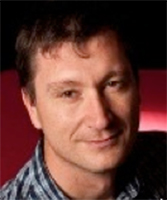
François Brémond
INRIA Sophia Antipolis, France
francois.bremond@inria.fr
François Brémond is a Research Director at INRIA Sophia Antipolis. He created the STARS team on the 1st of January 2012 and was previously the head of the PULSAR INRIA team in September 2009. He obtained his Master degree in 1992 from ENS Lyon. He has conducted research work in video understanding since 1993 both at Sophia-Antipolis and at USC (University of Southern California), LA. In 1997 he obtained his PhD degree from INRIA in video understanding and François Brémond pursued his research work as a post doctorate at USC on the interpretation of videos taken from UAV (Unmanned Airborne Vehicle) in DARPA project VSAM (Visual Surveillance and Activity Monitoring). In 2007 he obtained his HDR degree (Habilitation à Diriger des Recherches) from Nice University on Scene Understanding: perception, multi-sensor fusion, spatio-temporal reasoning and activity recognition.He also co-founded the CoBTek team from Nice University on the 1st of January 2012 with P. Robert from Nice Hospital on the study of behavioral disorders for older adults suffering from dementia. He designs and develops generic systems for dynamic scene interpretation. The targeted class of applications is the automatic interpretation of indoor and outdoor scenes observed by sensors and in particular by monocular colour cameras. These systems detect and track mobile objects, which can be either humans or vehicles, and recognize their behaviours. He is particularly interested in filling the gap between sensor information (pixel level) and behaviour recognition (semantic level). François Brémond is author or co-author of more than 140 scientific papers published in international journals or conferences in video understanding. He is reviewer for several international journals (CVIU, IJPRAI, IJHCS, PAMI, AIJ, Eurasip JASP,...) and conferences (CVPR, ICCV, AVSS, VS, ICVS,…). He has (co-)supervised 13 PhD theses. He is an EC INFSO and French ANR Expert for reviewing project. He was teaching numerical classification at Nice University and video understanding in a High Engineer School at Master level. He has participated to 12 European projects (Esprit, ITEA, FP6, FP7: PASSWORDS, ADVISOR, AVITRACK, SERKET, CARETAKER, CANTATA, COFRIEND, SERKET, VICOMO, VANAHEIM, SUPPORT, DEM@CARE), one DARPA project, 12 French projects (ANR, DGE, Prédit, TechnoVision, PACA, CG06,...), several industrial research contracts (Bull, Vigitec, SNCF, RATP, ALSTOM, STMicroElectronics, Thales, Keeneo, LinkCareServices, Neosensys...) and several international cooperations (USA, Taiwan, UK, Belgium) in video understanding. For instance, he has succeeded to recognize a large variety of scenarios in different applications: fighting, abandoned luggage, graffiti, fraud, crowd behavior in metro stations, in streets and onboard trains, aircraft arrival, aircraft refueling, luggage loading/unloading on airport aprons, bank attack in bank agencies, access control in buildings, office behavior monitoring for ambient intelligence, older adult activity monitoring for homecare applications and wasp monitoring for biological application. He has also participated to a series of ARDA workshops to build an ontology of video events.

Matthew Turk
University of California, United States of America
mturk@cs.ucsb.edu
Matthew Turk is the President of TTIC, an independent philanthropically endowed graduate research institute that focuses on computer science theory and artificial intelligence. His research interests are in computer vision and human-computer interaction, largely concerned with using computer vision as an input modality. That means using cameras (and other sensors) to perceive relevant information about people and the world and then using this information to improve the interface between humans and computers. In recent years, many of the applications have been in augmented reality, and mostly focused on real-time mobile computing environments.
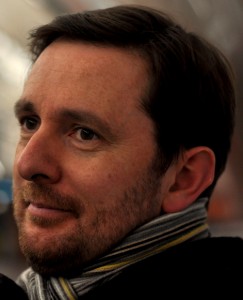
Alessandro Vinciarelli
University of Glasgow, United Kingdom
vincia@dcs.gla.ac.uk

Volker Krüger
Aalborg University, Denmark
vok@m-tech.aau.dk
News
There are no news registered in